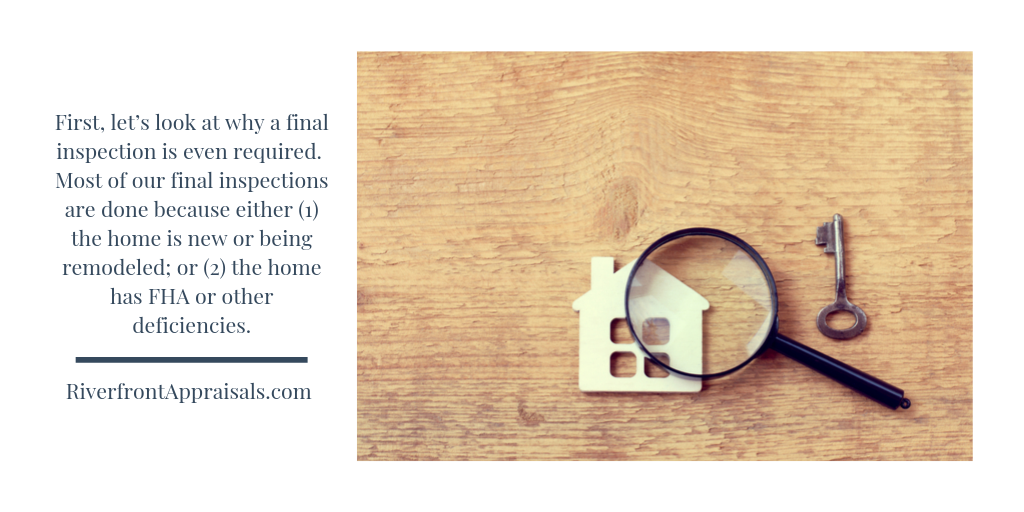
Property Taxes Just Went Up? We’ve Got You Covered!
It’s reassessment season for most folks in our area. Homeowners

I wrote this blog post a couple of years ago, but the topic bears another look. In this updated post, we’ll look at what a final inspection is, and what steps you can take to make the most of the appraiser’s return visit.
Just because the appraisal has been completed and sent in to the bank, it doesn’t mean you’re clear to close. Your loan officer will look closely at the report to see if there are any conditions of the appraisal, and let you know. There might be repairs, and someone is going to have to fix them. Maybe a contractor will have to inspect the roof for possible damage before you can close. If you’re financing a manufactured home through the FHA, you’ll need a structural engineer’s report. There’s a host of items that may need to be taken care of before closing – any of which could cause delays. Thankfully, there are a few things you can do to move the process along, and ensure that the repairs are complete when the appraiser comes back.
First, let’s look at why a final inspection is even required. Most of our final inspections are done because either (1) the home is new or being remodeled; or (2) the home has FHA or other deficiencies.

When a home is being built or renovated, appraisers often complete an appraisal subject-to the home (or renovations to the home) being finished. We base our opinion of value on the hypothetical condition that the home will actually be built/rehabbed just like the builder or homeowner said it would be. To check and make sure everything was built according to plans, the lender usually sends the appraiser back out after the home is complete, to do a final inspection. At this point, the appraiser checks the original appraisal, plans & specs, and all other relevant information to make sure it is complete, and built per plans.
Much more common, though, are property deficiencies. All government loan programs have specific appraisal guidelines that usually go above and beyond what is typically required in a traditional, conventional loan. I’ve blogged about some of those items here. If the appraiser notes any deficiencies, the appraisal is then completed subject-to repairs or re-inspection. Once those repairs are complete, the appraiser is called back out to verify that the home now meets guidelines.
I haven’t met anyone who loves the idea of the appraiser coming back out for a final inspection. Hate it as much as you like, it’s just part of the process. However, it doesn’t have to be terrible. Here are three tips for getting through the process quickly and successfully.
[bctt tweet=”The final inspection process can be confusing, time-consuming, and frustrating. But by reading, communicating, and planning well, the final inspection can be completed easily and quickly, so you can get to closing sooner. ” username=”RiverfrontApp”]
If you have any questions about the final inspection process, or about the appraisal process in general, feel free to give us a call anytime!
Helping homeowners navigate the appraisal process,
Ryan Bays, SRA, AI-RRS

It’s reassessment season for most folks in our area. Homeowners

I feel like we all need a laugh. How about

So this may be a slight break from the norm,
Riverfront Appraisals has been providing comprehensive valuations of residential properties to Western Kentucky and Southwestern Indiana since 2008.